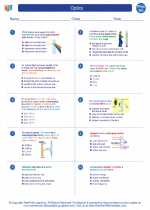DNA: Deoxyribonucleic Acid
Deoxyribonucleic Acid (DNA) is a molecule that carries the genetic instructions for the development, functioning, growth, and reproduction of all known living organisms and many viruses. It consists of two long chains of nucleotides twisted into a double helix and is responsible for storing and transmitting genetic information.
Structure of DNA
The structure of DNA is a double helix, which consists of two long chains of nucleotides. Each nucleotide is made up of a sugar molecule (deoxyribose), a phosphate group, and a nitrogenous base. The four nitrogenous bases found in DNA are adenine (A), thymine (T), cytosine (C), and guanine (G). These bases pair up in a specific manner: A pairs with T, and C pairs with G.
Functions of DNA
The primary functions of DNA include:
- Storage of Genetic Information: DNA carries the genetic instructions that determine the traits and characteristics of an organism.
- Replication: DNA can make copies of itself, allowing genetic information to be passed on to new cells and offspring.
- Gene Expression: DNA contains the information for producing proteins, which are essential for the structure and function of cells.
Study Guide
To understand DNA, it's important to grasp the following concepts:
- Structure of DNA: Understand the components of a nucleotide, the arrangement of nucleotides in a DNA molecule, and the double helix structure.
- Base Pairing: Learn how adenine pairs with thymine and cytosine pairs with guanine in DNA.
- Functions of DNA: Understand the roles of DNA in storing genetic information, replication, and gene expression.
- Replication: Study the process of DNA replication, including the role of enzymes and the importance of fidelity in replication.
- Genetic Code: Explore how the sequence of nucleotides in DNA encodes the information for protein synthesis.
By mastering these concepts, you will have a solid understanding of DNA and its significance in genetics and biology.



